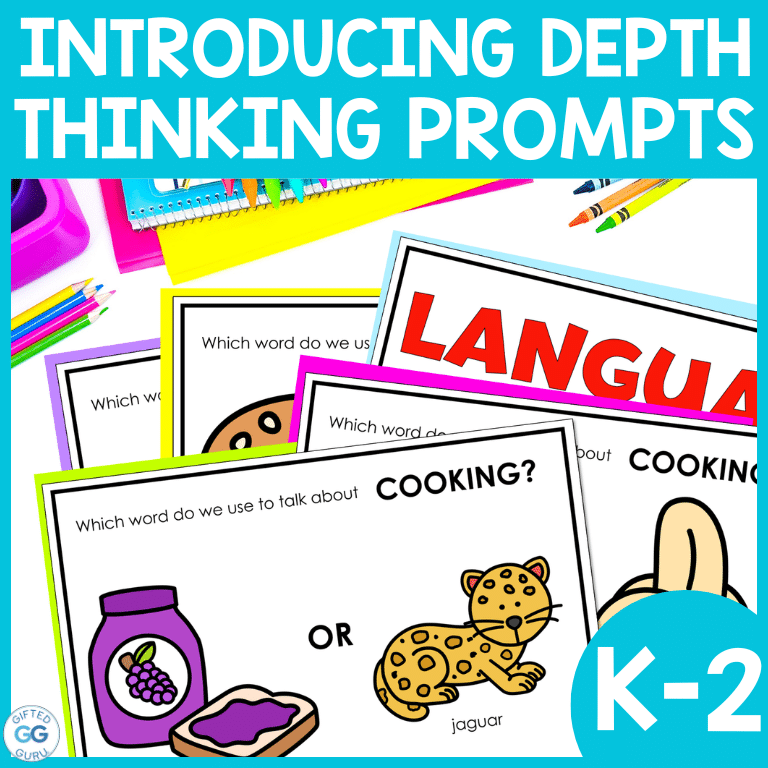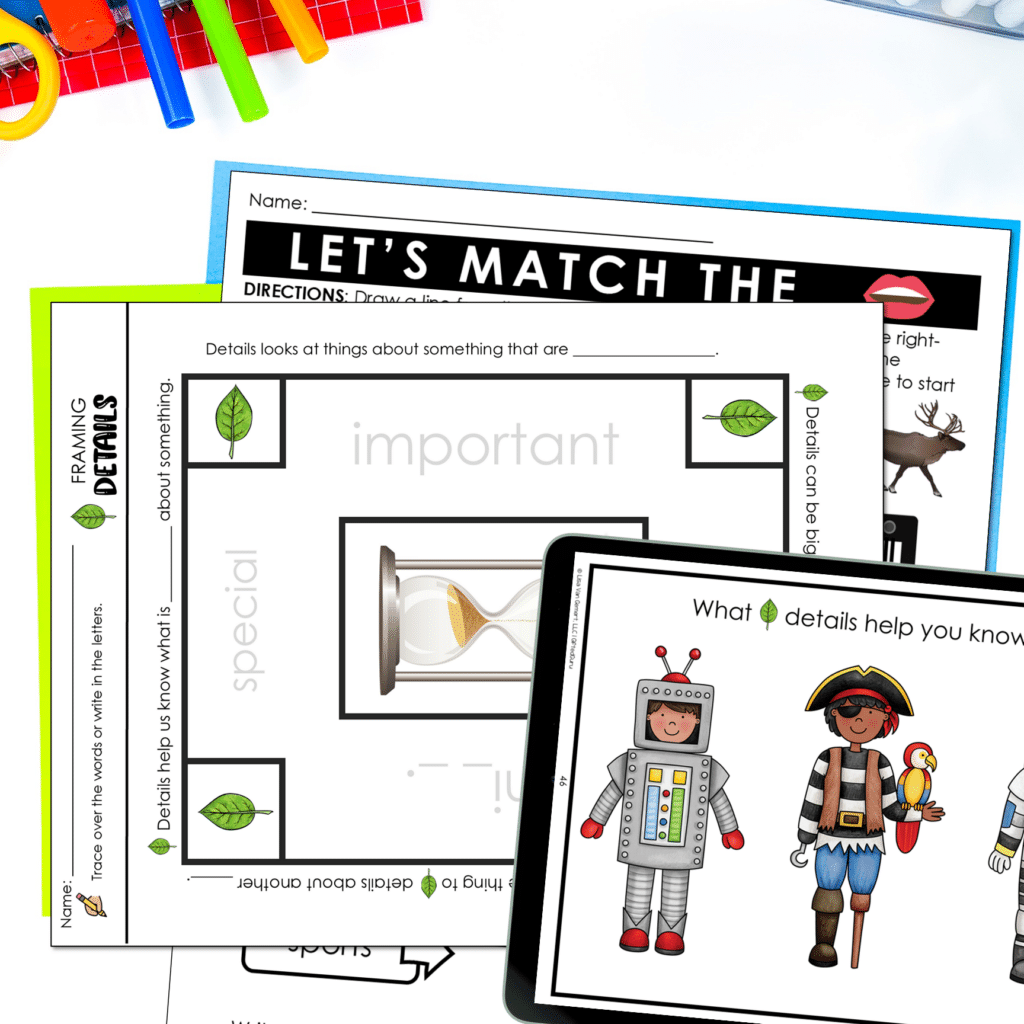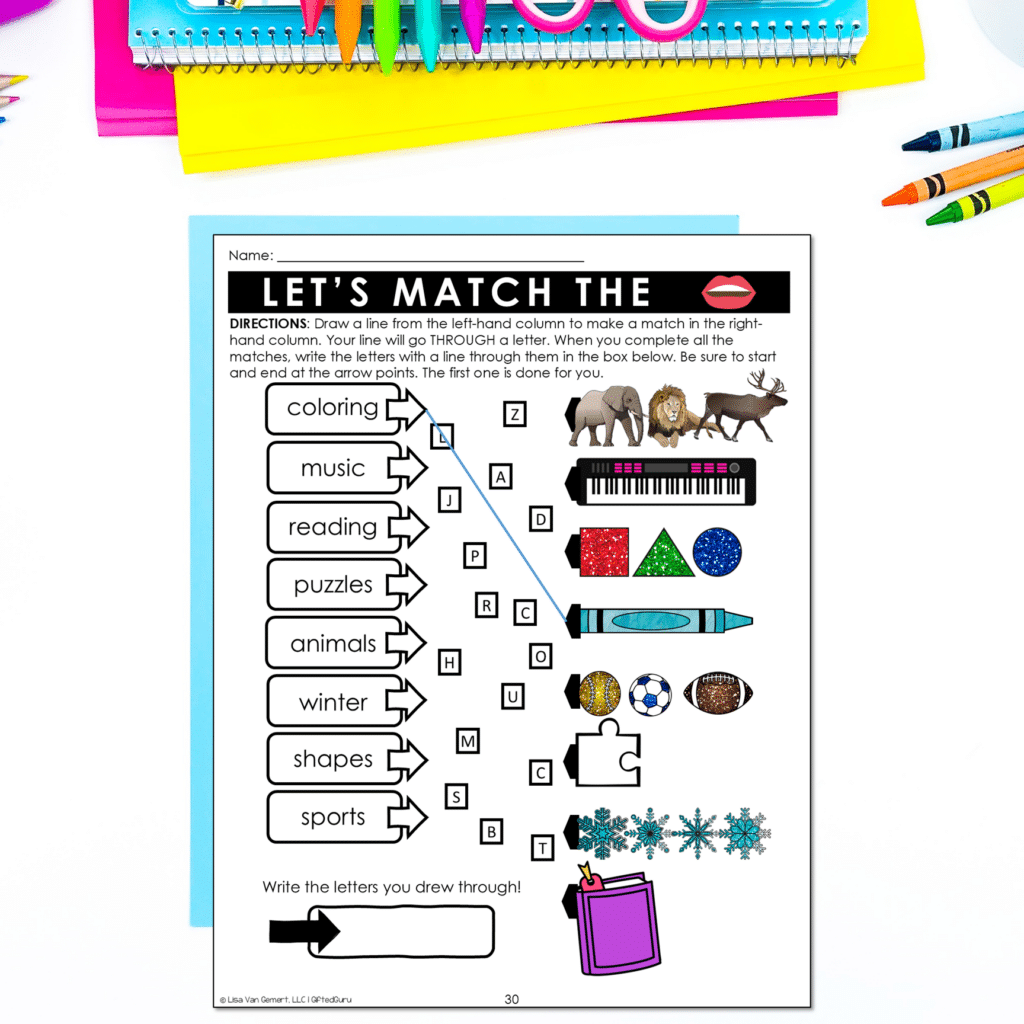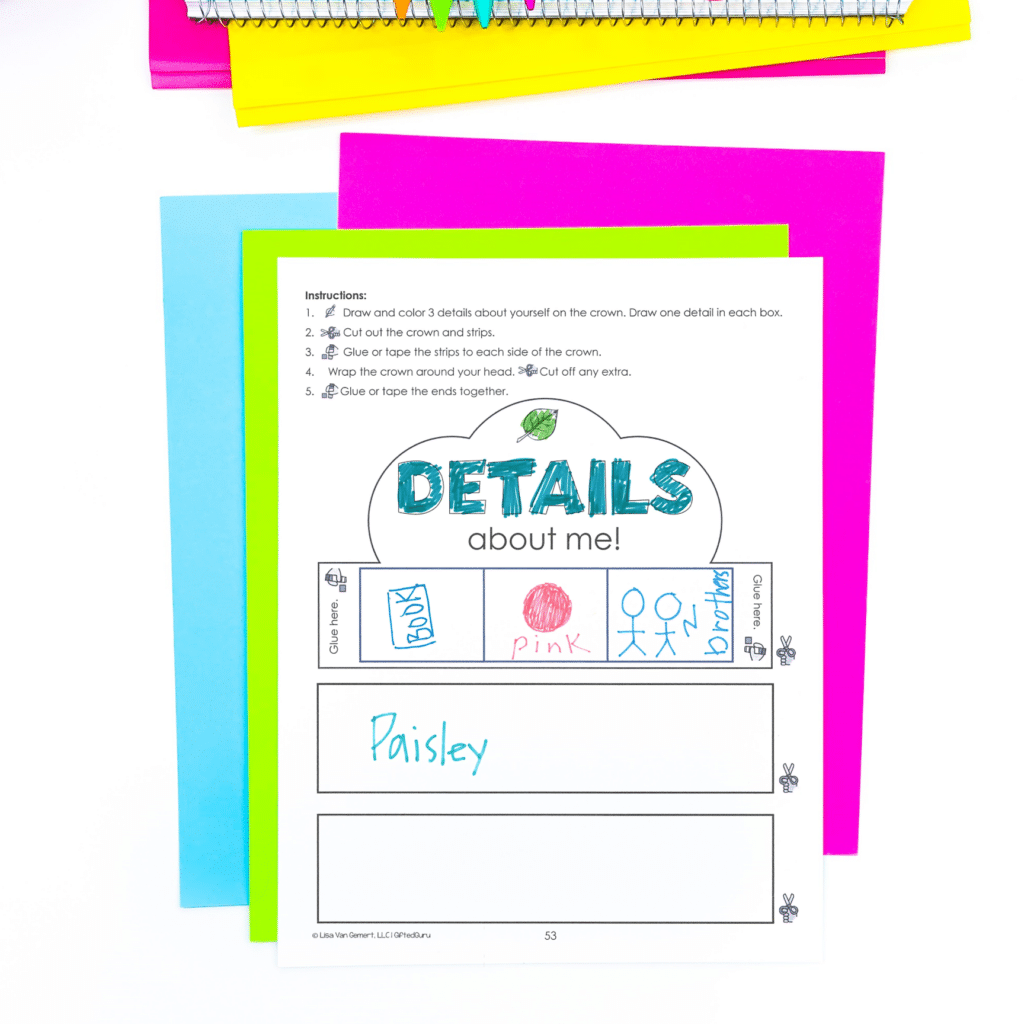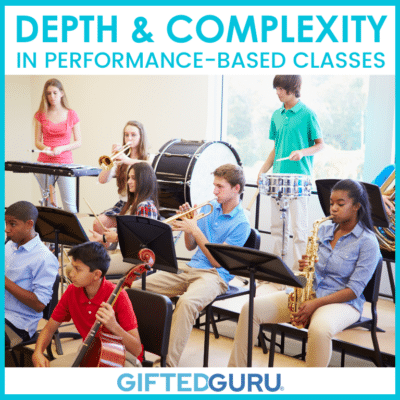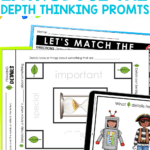Why are introductions so important?
We all know that introducing something new in the classroom – whether it’s a routine, a concept, or a way of thinking – can make or break how well it works. It’s just like being invited to a party. The more attention someone paid to the invitation, the more attention you know they’ve paid to the actual event.
You know what I mean if you’ve ever been invited to a wedding by being forced into a Facebook event! No bueno!
We signal learners that something is important (and fun!) based on how we introduce it.
The same is true for Depth and Complexity. If we introduce the thinking prompts well, students (and teachers!) feel comfortable and confident using them. And let’s be honest, introducing them to students is also a great refresher for us!
That’s why I created a low-prep, high-engagement resource designed specifically to introduce four Depth thinking prompts to Kindergarten through Second Grade students:
👄 Language of the Discipline
🍃 Details
🌳 Big Idea
⚖️ Ethics
This set makes the introduction easy, interactive, and fun, so students don’t just hear about these thinking prompts—they experience them!
Let me show you what I mean.
Why Introduce These Prompts Intentionally?
The Depth and Complexity framework is incredibly powerful, but only if students actually understand and use the prompts. If we rush through the introduction, students may struggle to apply them correctly, and teachers may feel like it’s just one more thing to juggle.
By taking the time to intentionally introduce these four prompts, you’ll help students see them as tools they can use to think more deeply—without overwhelm. And when students grasp the prompts early, it sets the stage for using them naturally across subjects all year long.
That’s why when I make a resource that introduces thinking prompts I use:
- A variety of activities
- Interactive activities
- High-level thinking, even for younger students
You can see how I did that in this resource, where I introduce four of the Depth thinking prompts to K-2 students.
What kinds of things are included?
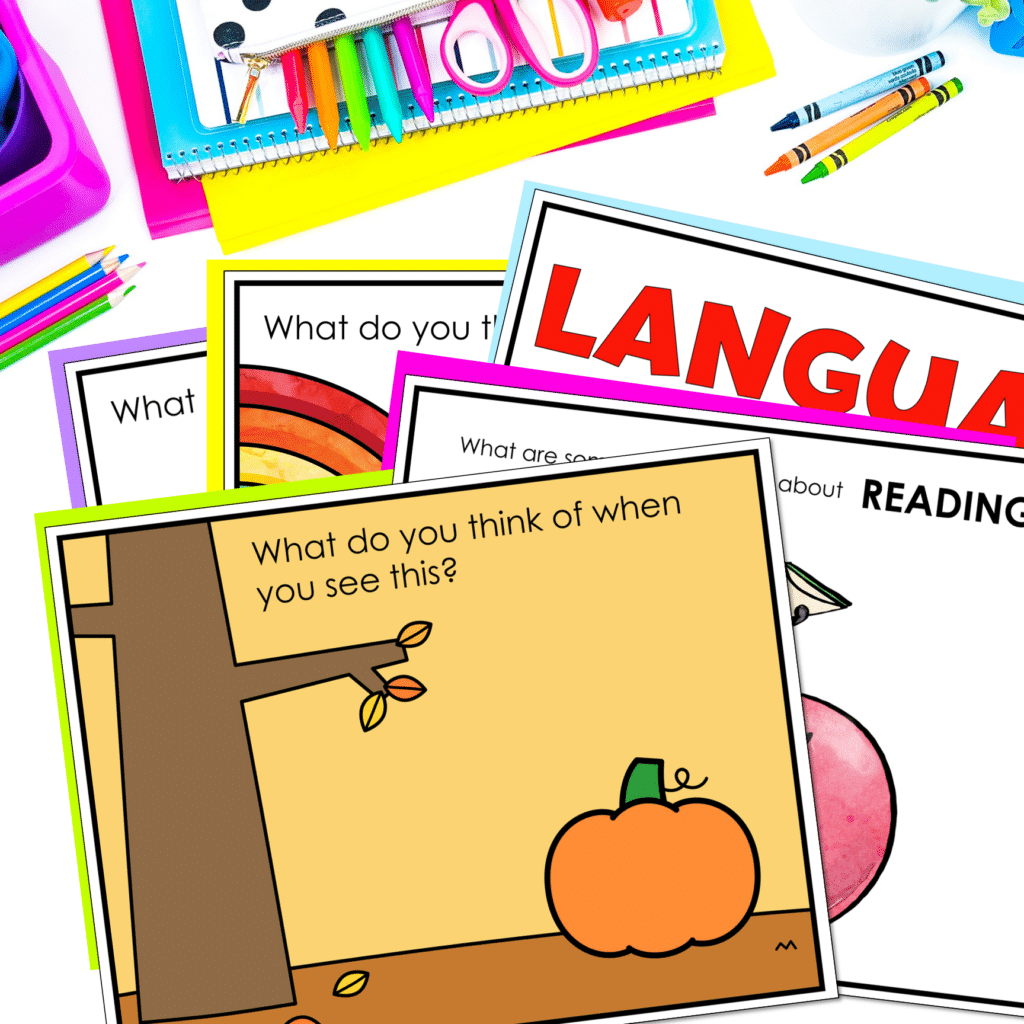
This resource is packed with 100+ pages of activities, posters, and teacher instructions that make it easy to introduce Language of the Discipline, Details, Big Idea, and Ethics to young learners. You can use them on consecutive days or space them out over time—whatever fits your schedule best!
Here’s a peek at what’s inside:
👄 Language of the Discipline Activities
- Three different activities, including a super fun matching game!
- I use really great images to make the concepts more engaging and interesting to young students.
🍃 Details Activities
- Three engaging activities to introduce the Details prompt
- Depth and Complexity frame with rubric (color & black/white)
- Details crown for students to make and wear
🌳 Big Idea Activities
- An introduction activity that also meets fable standards
- A Big Idea activity that connects to Kindergarten, First, and Second Grade science standards
⚖️ Ethics Activities
- Multiple activities to introduce Ethics, including a Fair/Unfair sticks activity that’s interactive and reusable!
🎉 Bonus Materials
- Posters for all four thinking prompts
- Blank posters if you use the older icons
- Teacher instructions for every activity so you can implement them smoothly
Check out the Table of Contents to see all you get!
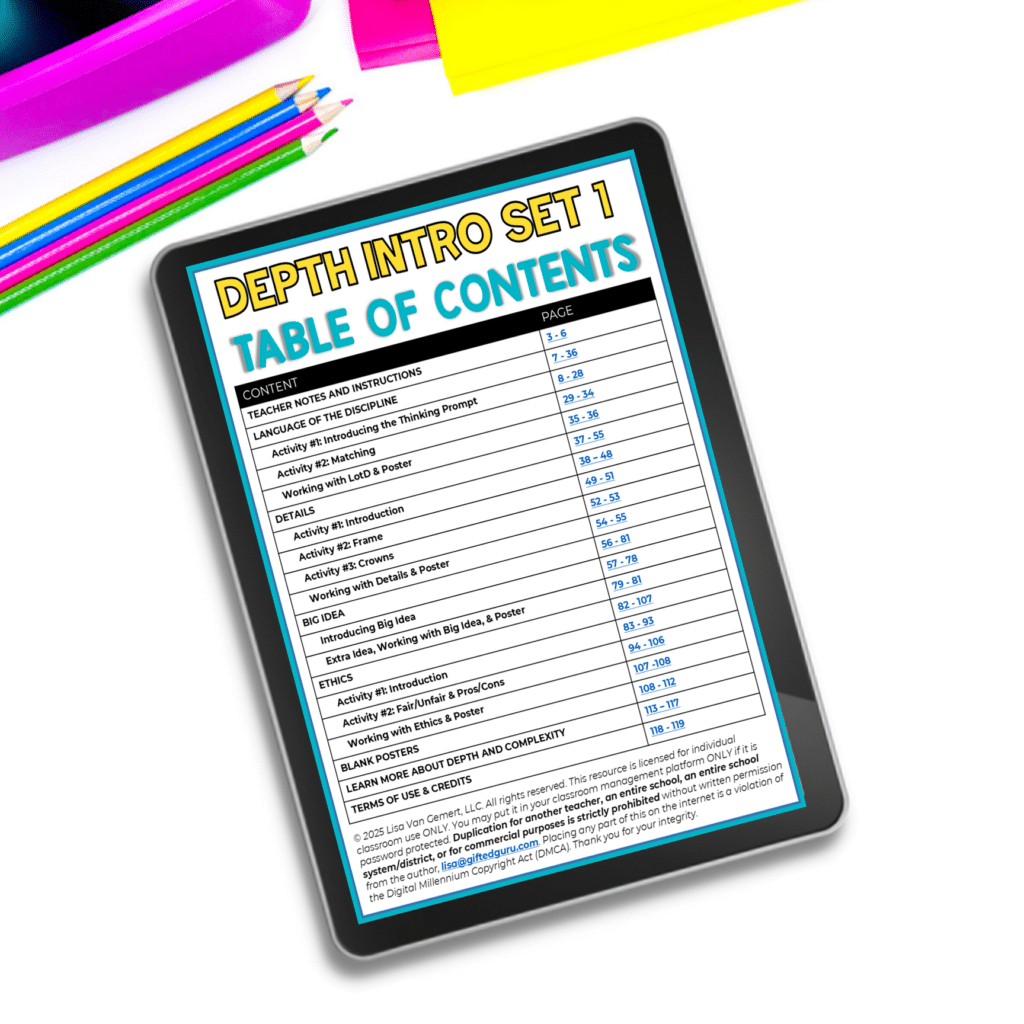
Why You’ll Love This Resource
I like to include hands-on activities like this 🍃Details crown. Not only does it let students practice, but it also takes a little time. During that time, they’re thinking about the thinking prompt. It’s a win-win.
I also consider these things:
- Low-prep & no-prep options (because no one has time for complicated setups)
- Interactive & engaging (so students stay involved)
- Designed for K-2 learners (making Depth and Complexity accessible to younger students)
- Flexible pacing (use over a few days or stretch across weeks)
Grab Your Copy!
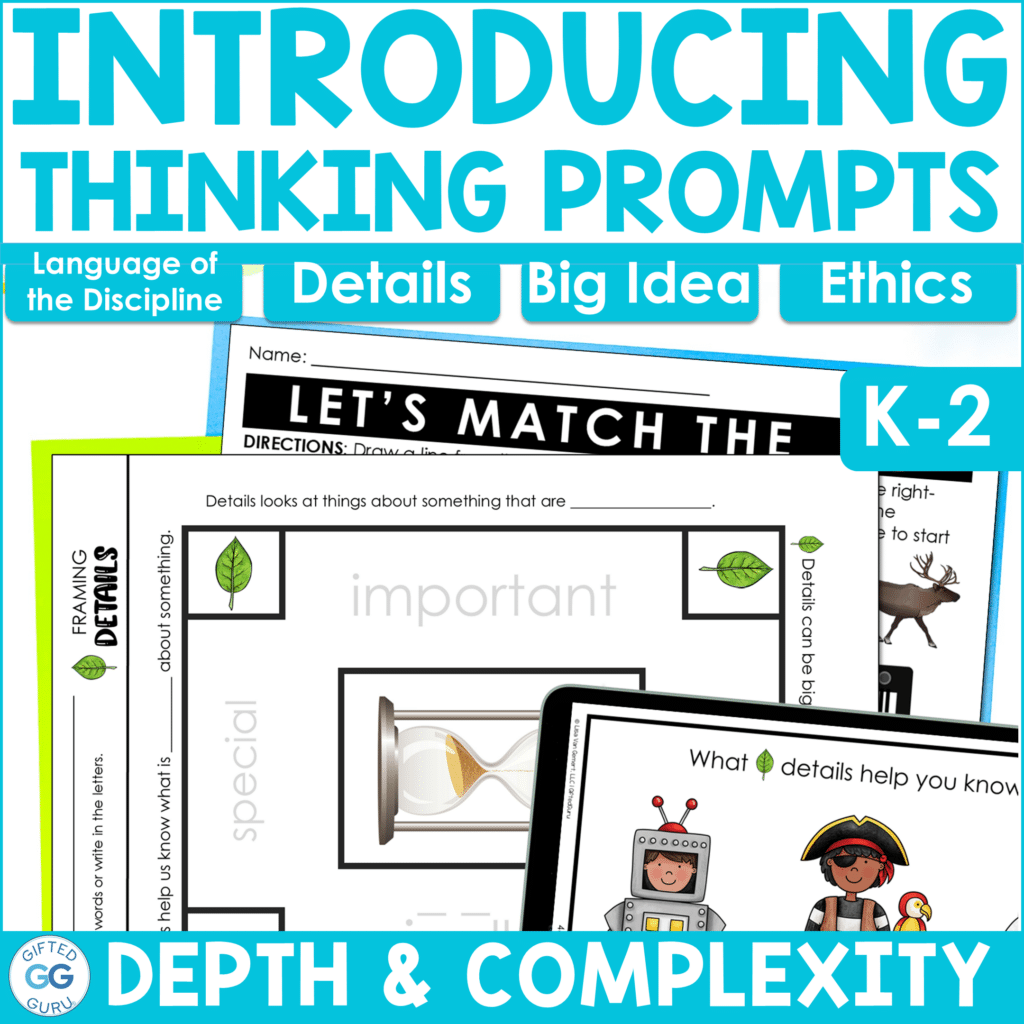
You can find Introducing Depth & Complexity Thinking Prompts for K-2:
✅ Check it out directly from me.
I’d love to hear how you introduce these thinking prompts in your classroom! Tag me on Instagram (@thegiftedguru) if you use this resource—I always love seeing it in action!
Want to go further?
If you love this set, I also have a second resource that introduces the three Complexity thinking prompts to K-2 students. It pairs perfectly with this one and helps build a solid foundation for Depth and Complexity.
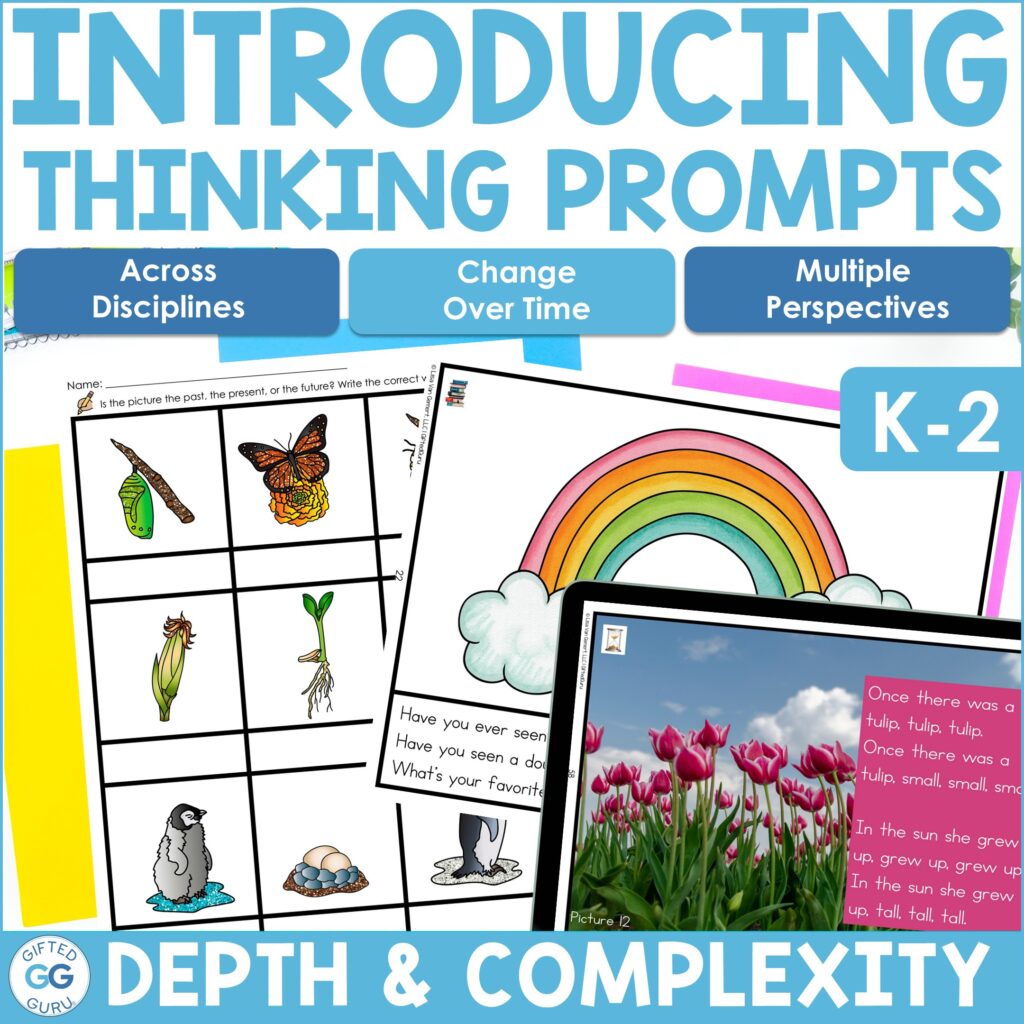
You can find Introducing the Complexity Depth & Complexity Thinking Prompts for K-2:
✅ Check it out directly from me.

